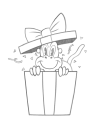Level up your portrait skills in Michael Hampton’s premium course
Basic Head Construction
Start with a basic sphere to represent the cranium. Determine the tilt and rotation of the head by adding the jaw and chin. Gesture the neck, thinking about the pinch and stretch as it connects to the head.
Establish the proportions by dividing the face into halves and thirds. Mark the brow line and the hairline. Use four points to define the sides of the head and establish the quarters where features like the ears will be placed.
Defining Facial Features
The Facial Planes
Begin to map out the sockets of the eyes and relate them to the forehead. Create overlaps, such as having the cheekbone go behind the brow, to add depth.
The Keystone and Sockets
Identify the keystone, the area between the eyebrows, and draw the socket lines. Position the nose using these guidelines and construct it with a simple box to understand its planes.
Building the Nose
Consider the nasal saddle and adjust the width accordingly. Visualize the nose as a series of boxes and planes, noting how it drops back in shadow and comes forward.
Constructing the Mouth
Use the philtrum shape to start the mouth. Think of the lips as an "M" and a "W" wrapped across the centerline. Adjust these shapes to capture the individual's unique features. Remember the denture sphere, the cylindrical form of the mouth area.
Simplifying Forms
Always reduce complex features into simple forms: balls, stretched cylinders, and curved boxes. This simplification aids in understanding the structure and perspective of each feature.
Pay attention to the interplay between hard and soft forms. The face and body consist of transitions between these forms, which is important for creating realism.
Adding Light and Shadow
Understanding Edges
When adding light and shadow, consider the type of edges:
- Soft edges for spheres
- Firm edges for cylinders
- Hard edges for boxes
These edges help to describe the form and control the viewer's eye movement across the drawing.
Lighting Different Forms
Identify the core shadow, the darkest part of the shadow that describes the form's turn away from the light. Contrast this with cast shadows, which are sharper and result from one form blocking light onto another.
Ask yourself questions about the lighting conditions, such as the type of light and its direction. This helps in building a narrative and adds depth to your drawing.
Mapping Light and Shadow
Focus on where the light-dark division occurs on each form. Replace lines with edges, as there are no lines in nature, only edges. Use the underlying planes to guide the placement of shadows and highlights.
Gradually fill in shadows, starting with a mid-value and adjusting as needed. Lose unnecessary edges to prevent outlining and create a more natural appearance.
Finalizing the Drawing
Remember that initial lines and planes are a scaffolding to help with decision-making around tone and form. As you progress, these lines will become subtler, leaving you with a solid foundation for your drawing.
By understanding the simplified forms and effectively applying light and shadow, you'll create a head drawing that feels both structured and lifelike.
Level up your portrait skills in Michael Hampton’s premium course






